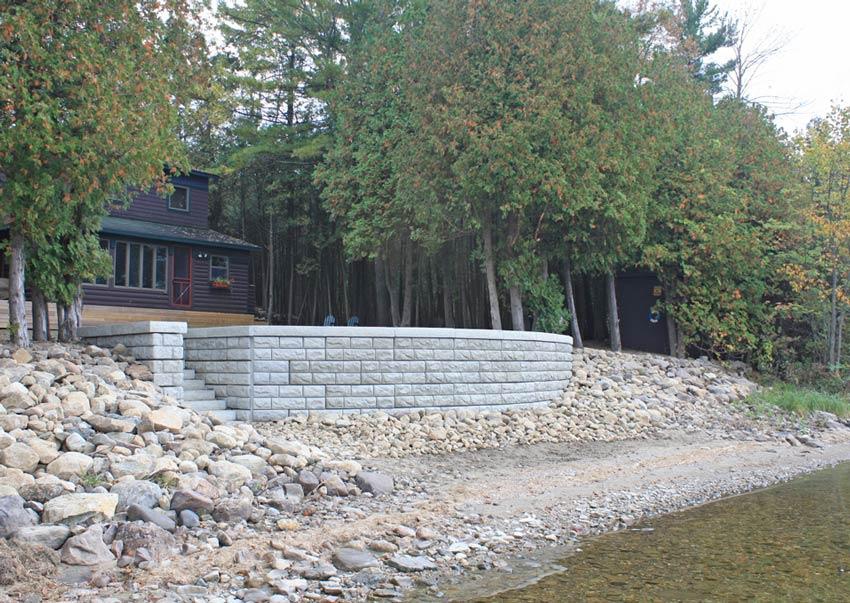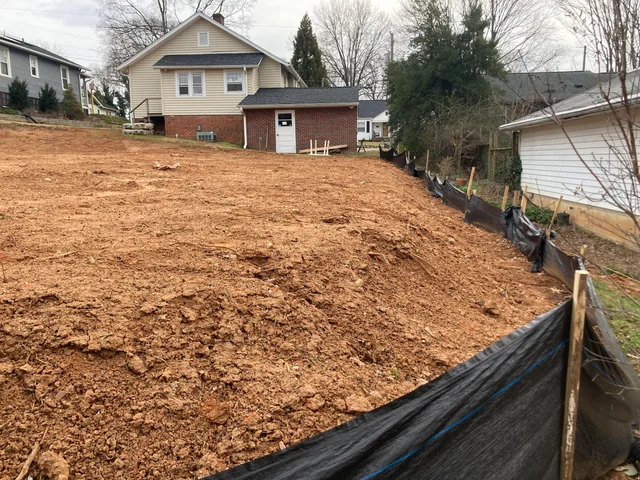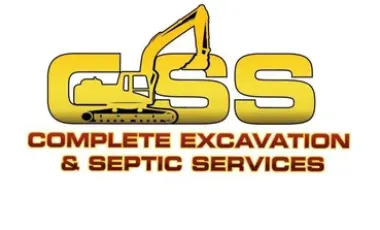
Proudly Serving: Grand Isle, Franklin & Chittenden Counties, VT and Clinton County, NY

Best Erosion Control Near Chittenden County, VT | 3 Expert Steps
1. What Erosion Really Looks Like on Vermont Properties
If you're reading this, chances are you're starting to notice something off about your yard or property. Maybe your driveway’s edge is crumbling, or water keeps pooling in the same stubborn spot after every rainstorm. Maybe the ground near your foundation looks like it's slowly disappearing. That’s erosion, and it sneaks up on a lot of property owners across Chittenden County.
Erosion does not always show up as a dramatic landslide. Sometimes it looks like exposed tree roots, thin patches of grass, or a steady trickle of muddy water heading downhill. In Vermont, with regular rain, snowmelt, and steep terrain, erosion can get out of hand faster than most people expect.
We’ve worked with homeowners who thought they had a small issue, until they saw their lawn sliding into the neighbor’s lot or their septic system shifting. If any of that sounds familiar, you are not alone. But you do need to act.

2. Why Ignoring Erosion in Chittenden County Can Cost You
It’s easy to put off erosion control when the damage seems minor. But erosion is not just cosmetic. It is your land washing away beneath your feet, one inch at a time.
Erosion leads to real damage, such as:
Cracked or sinking foundations
Flooded or mold-prone basements
Undermined septic systems
Washed-out driveways
Shifting property lines
Loss of soil and healthy vegetation
The longer erosion is left unchecked, the worse it gets. What could have been an easy fix may turn into a full excavation or rebuild. Some of the most expensive projects we’ve handled started with a simple drainage issue that was ignored for just one or two seasons.
If you are serious about protecting your land and your investment, here’s how to get ahead of erosion before it becomes a bigger issue.
3. Step 1: Identify the Source of the Problem
Before applying any erosion control solution, you need to understand what is causing the issue. That starts with walking your property and observing how water flows during and after a rainstorm.
Look for signs like:
Ruts or channels forming in the lawn
Exposed roots or shifting soil near trees
Soil collecting at the bottom of slopes
Standing water near your home or outbuildings
Soil pulling away from fences or retaining walls
In Chittenden County, erosion is often caused by poorly managed water runoff, steep slopes, or compacted soil that does not absorb moisture well. Sometimes it starts on neighboring properties, but the effects show up in your yard.
It is common for erosion to start small and grow wider. You might see symptoms at the bottom of your yard, but the actual cause is up above.
4. Step 2: Choose the Right Erosion Control Method
Once you know where the problem begins, you can start narrowing down your options. There is no one-size-fits-all solution. A fix that works for a steep hill might not work for a low-lying garden or a lakeside lawn.
Here are some of the most effective erosion control methods used around Chittenden County:
Silt Fencing
A temporary solution that holds soil in place, often used during construction or landscaping projects. Useful for short-term control but not a permanent fix.
Hydro-Seeding
A blend of seed, mulch, and fertilizer is sprayed over bare soil to promote fast root growth and ground cover. A great option for slopes or newly disturbed land.
Riprap
Heavy stone or crushed rock is placed on slopes, ditches, or shorelines to slow water and stabilize the ground. This is a common method used near Lake Champlain and along drainage channels.
French Drains
A gravel-filled trench with a perforated pipe that redirects water away from areas where it pools. Often used near foundations or septic systems.
Retaining Walls
Solid structures that hold soil in place and redirect water flow. A good choice for steep properties or multi-level yards. These need to be designed and built properly to be effective.
In many cases, we combine these methods. For example, hydro-seeding can be paired with erosion mats. French drains may work best when combined with proper grading. The goal is to create a long-term plan that fits your property and the local soil conditions.
5. Step 3: Work With a Local Contractor Who Knows the Land
Many erosion control problems get worse when the wrong contractor is hired. You want someone who understands how Vermont soils behave in the spring, how frost affects your yard in winter, and how water moves during heavy storms.
The wrong fix can make things worse. We've seen low-cost jobs fail within months because the contractor did not account for slope direction, drainage, or soil type.
Here are a few smart questions to ask when hiring:
Have you worked on erosion control projects in Chittenden or Grand Isle County?
Can you explain how Vermont's seasonal changes affect soil stability?
Will you walk my property with me and explain your plan?
Do you offer custom solutions, or just one or two cookie-cutter options?
At Complete Excavation & Septic, we’ve been called in to repair failed erosion jobs that could have been avoided with the right approach from the start. Our team understands the local terrain and soil behavior. We take the time to do it right.
6. Common Mistakes We See (and How to Avoid Them)
We have seen it all. The quick-fix solutions that don’t last, the do-it-yourself efforts that backfire, and the low-bid jobs that end up costing double.
Here are some of the most common mistakes homeowners make:
Waiting Too Long
Erosion only speeds up. Waiting a year or two will almost always cost more than addressing the issue now.
Poor Grading
Grading that directs water toward your foundation or septic system is a disaster waiting to happen. Even a small slope in the wrong direction causes major problems.
Partial Fixes
Installing a drain without addressing slope issues, or planting grass without stabilizing the soil underneath, rarely solves the problem.
Weak Materials
Thin plastic, low-quality seed blends, or undersized rock do not stand up to Vermont’s weather. Invest in materials that last.
Avoid these mistakes by asking the right questions and working with a team that understands the full picture.
7. How We Help Homeowners in Chittenden, Grand Isle, and Franklin Counties
At Complete Excavation & Septic, we are not a large firm, but we put everything into each job. We know the land. We know the water. And we know how erosion works here.
When we step onto a property, we take the time to listen. We walk the site with you. We ask questions that other contractors skip. And we come up with a solution tailored to your land, not just a generic blueprint.
We’ve built erosion control systems that hold up through spring snowmelt, heavy summer rains, and freezing fall nights. We care about long-term results, not just short-term appearances.
8. Final Thoughts: Your Land’s Future Depends on What You Do Today
The most common thing we hear is, "I wish I had taken care of this sooner." Erosion rarely gets better on its own. The best time to act is before the damage spreads, while it is still manageable and affordable.
If you live near a slope, a water body, or anywhere with runoff problems, take the first step today. Walk your property. Watch how water moves. Ask questions.
Then talk to someone who knows how to help.
At Complete Excavation & Septic, we are here to help homeowners across Chittenden, Grand Isle, and Franklin Counties protect their land for the long run. Whether it’s a small fix or a full property solution, we will work with you every step of the way.
Your property is worth protecting. Let’s start with a conversation.

Hours:
Mon - Fri 9:00 am - 5:00 pm
Extended hours by appointment only.



All rights reserved | Privacy policy | Client Support Area
Disclaimer: Septic inspection credit is applied to septic installations only and must be redeemed within 7 days after a written quote provided upon state acceptance of design.
Disclaimer: Septic soil test credit is applied to septic installations only and must be redeemed within 7 days after a written quote provided upon state acceptance of design.
